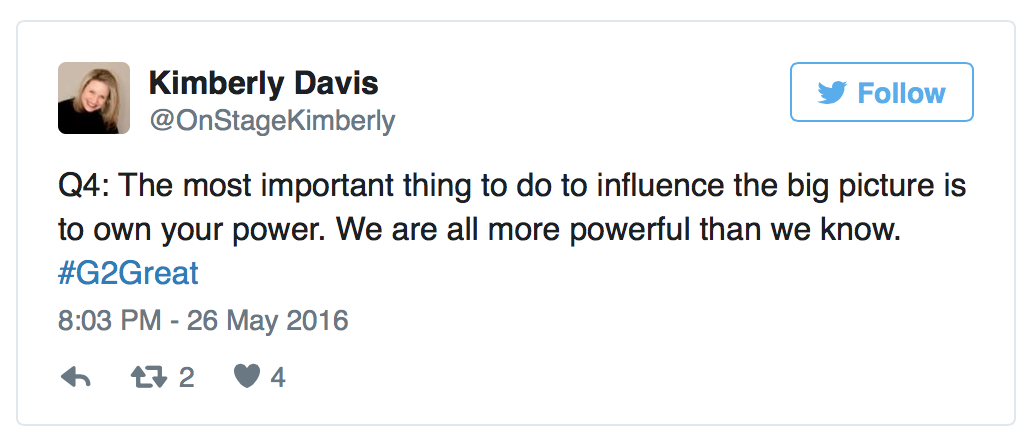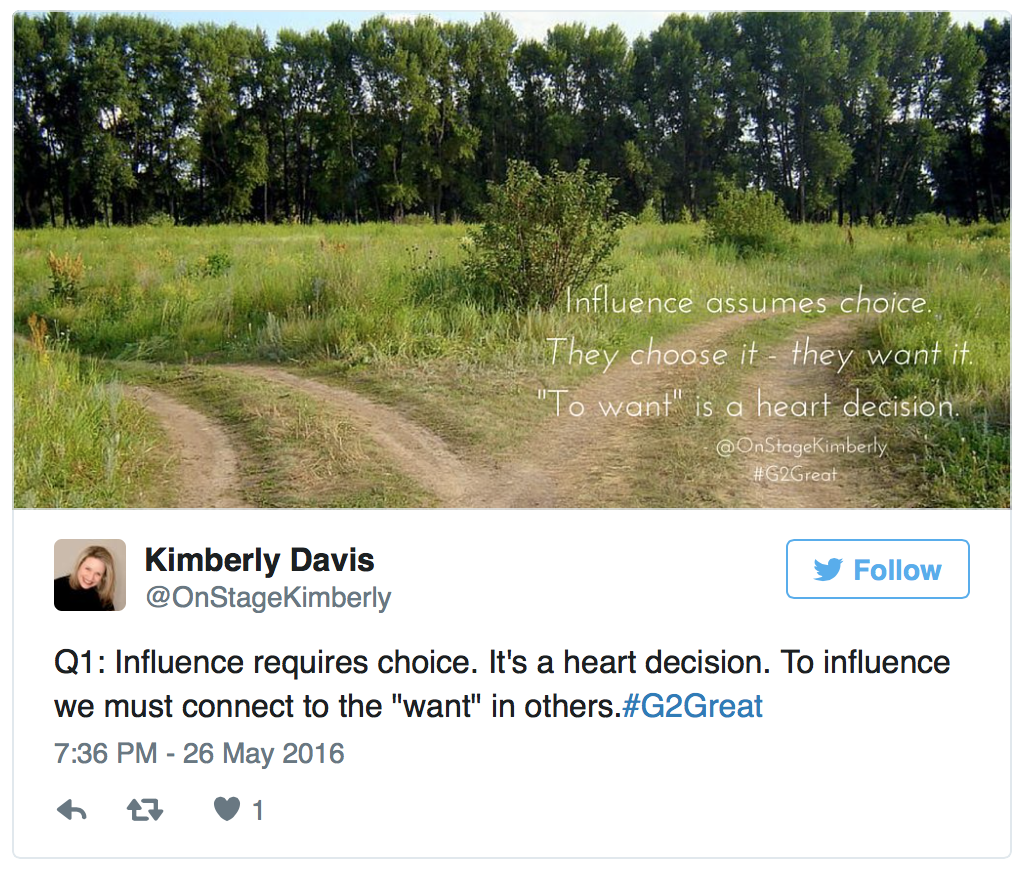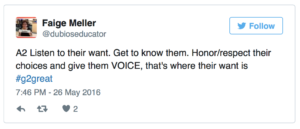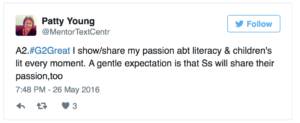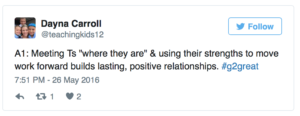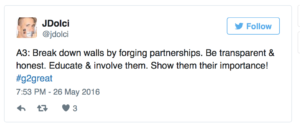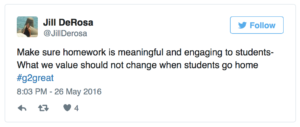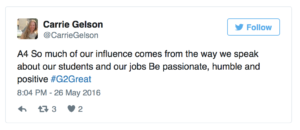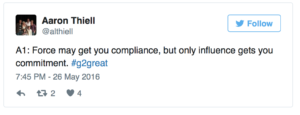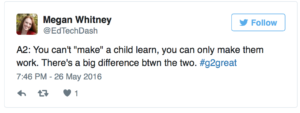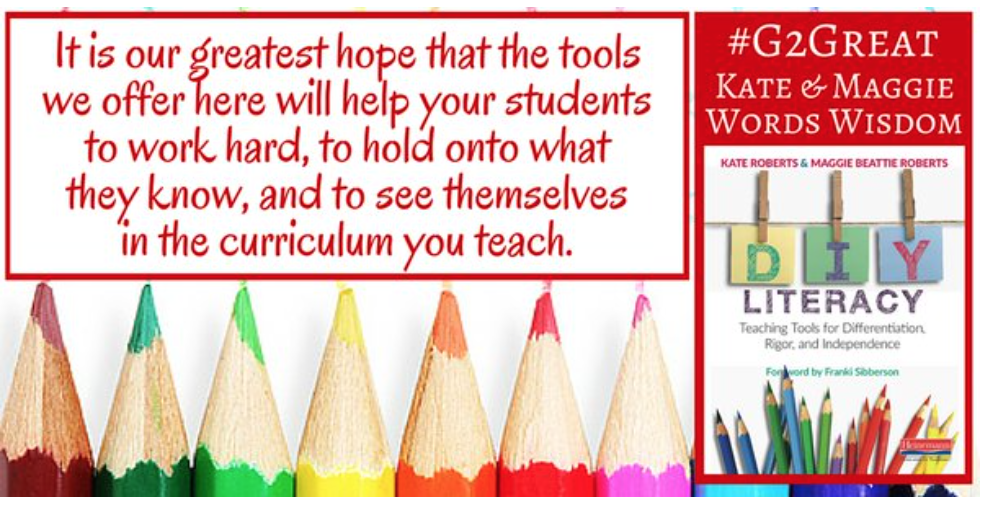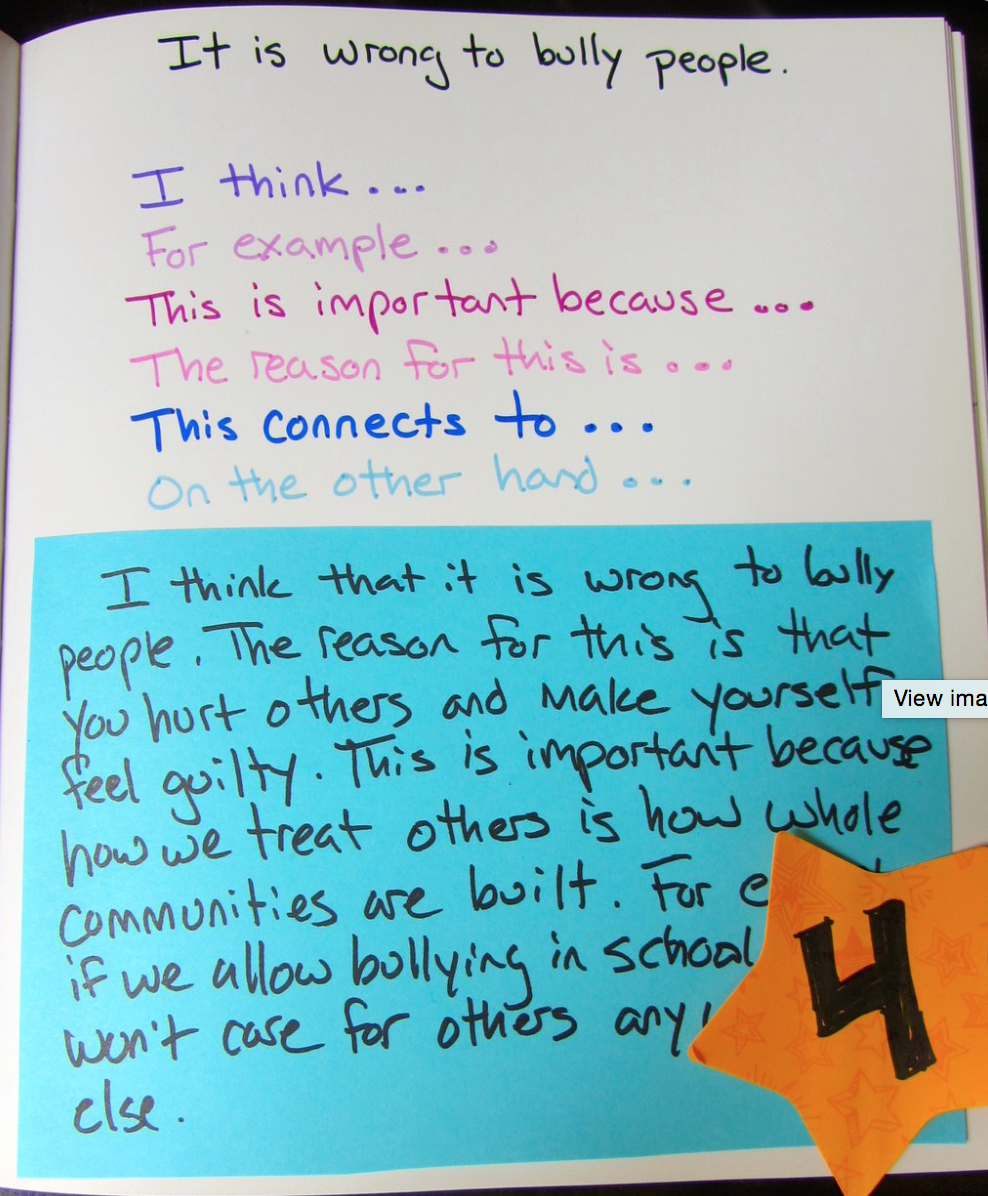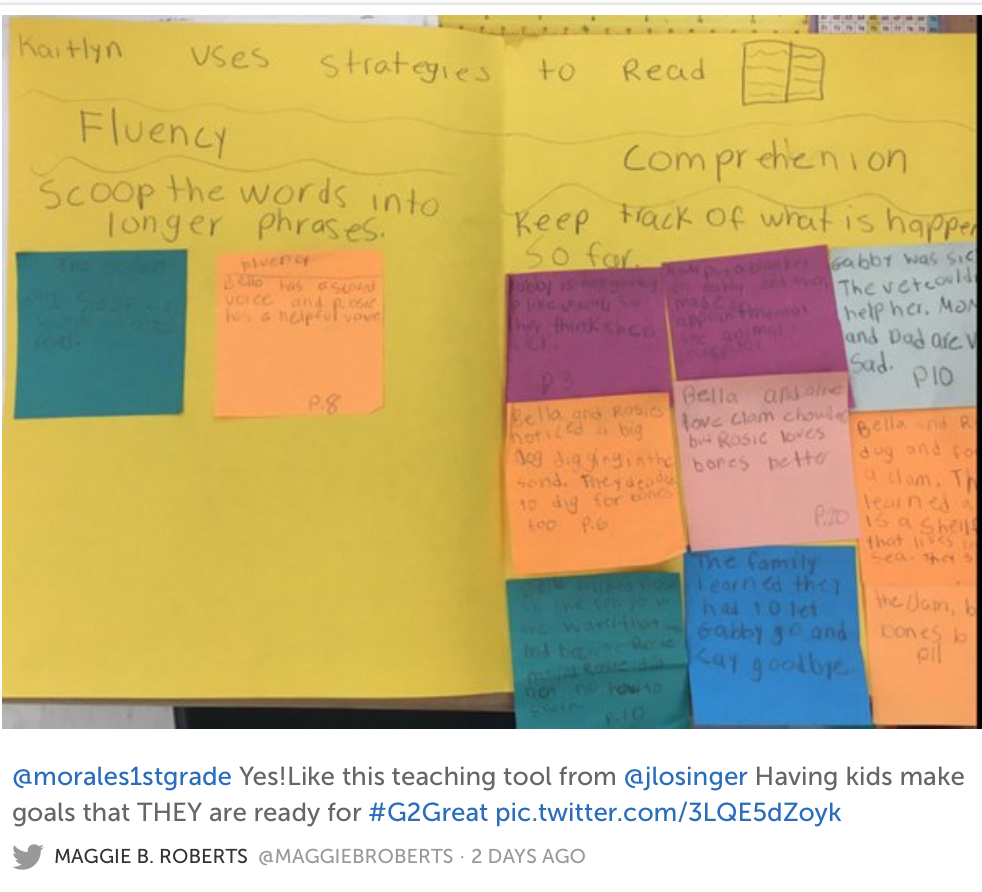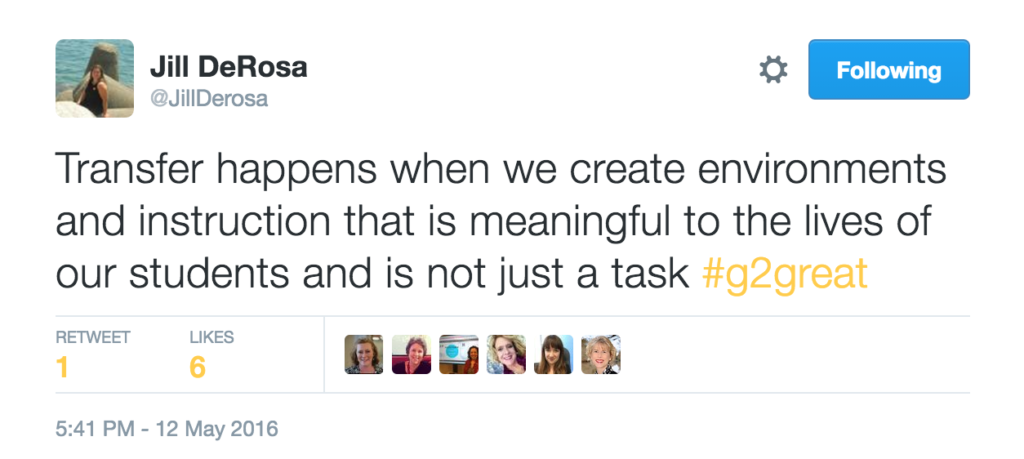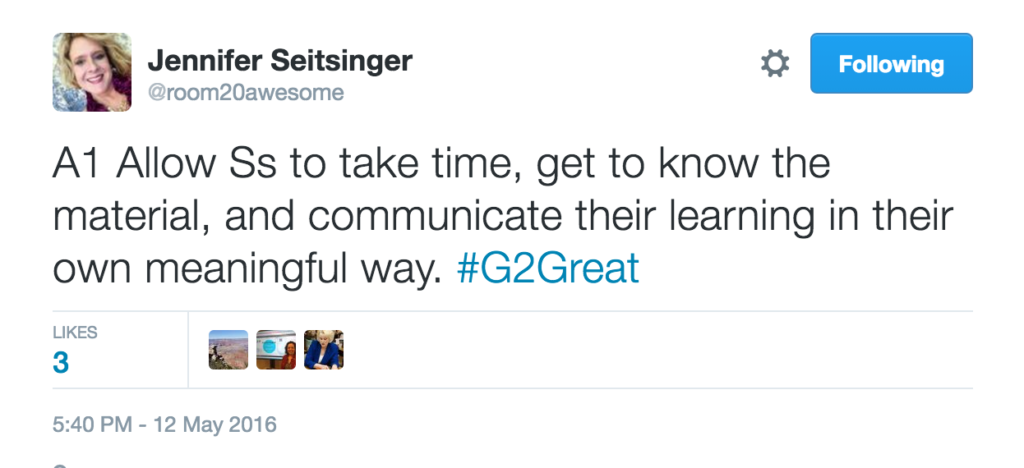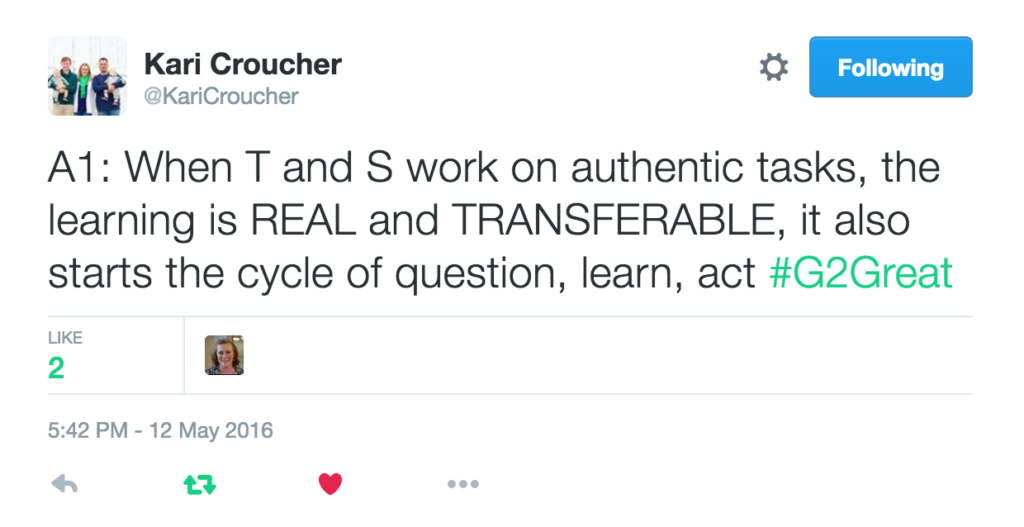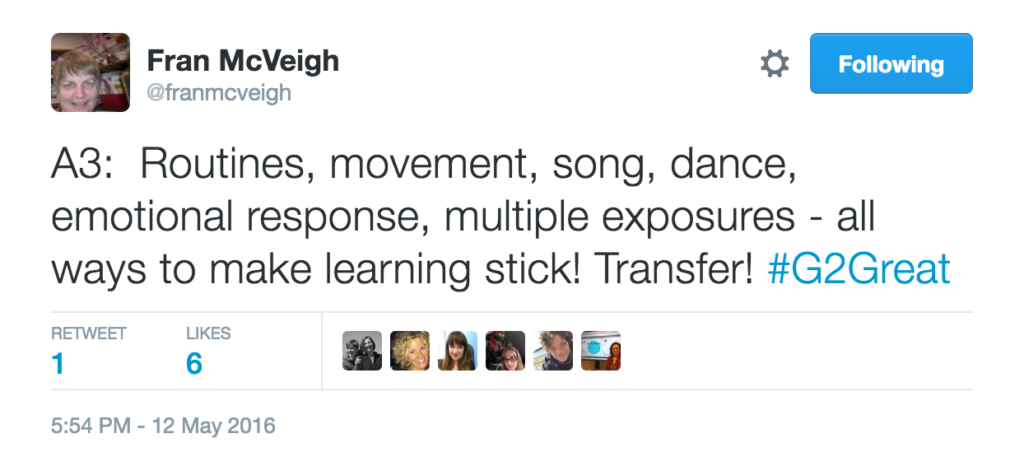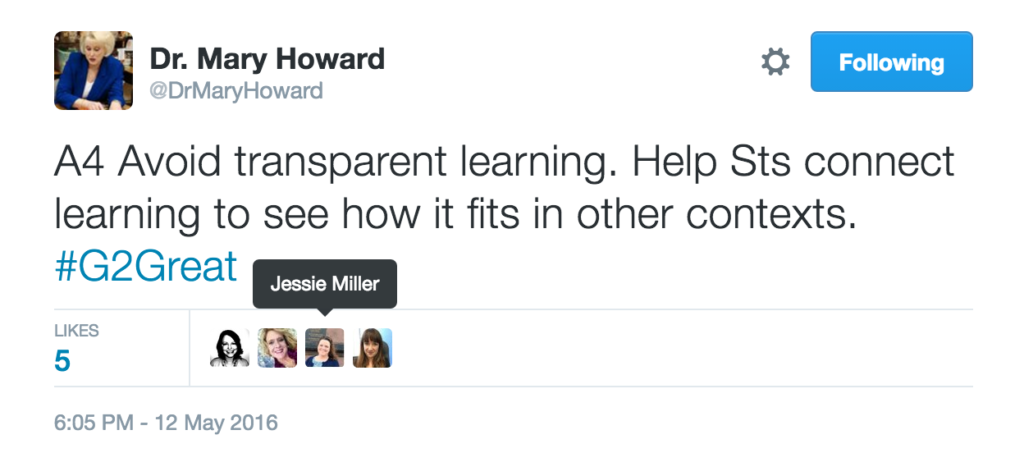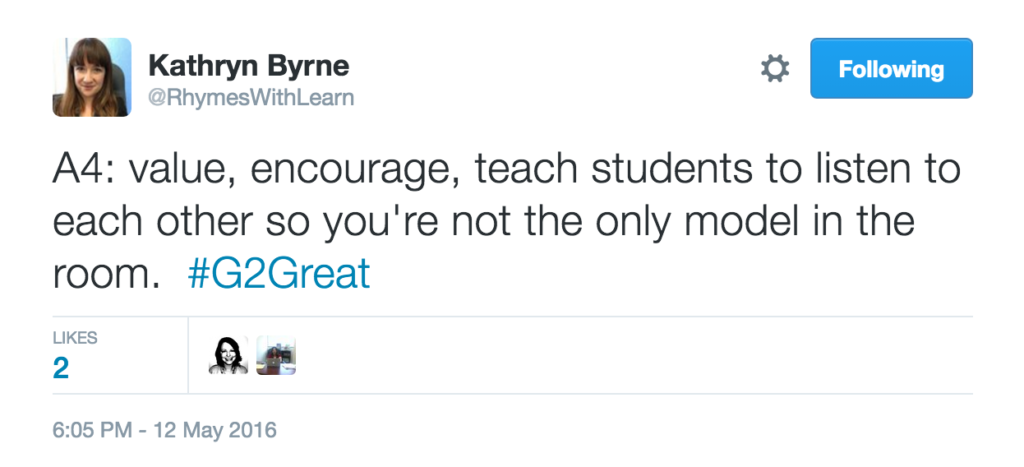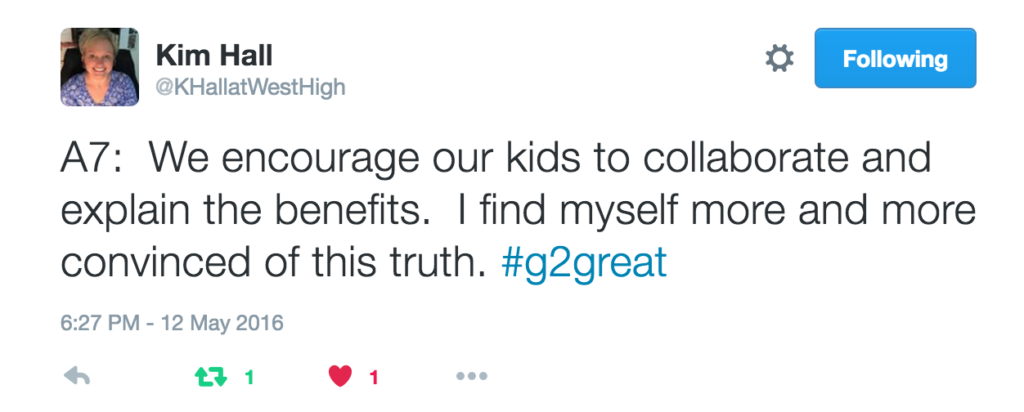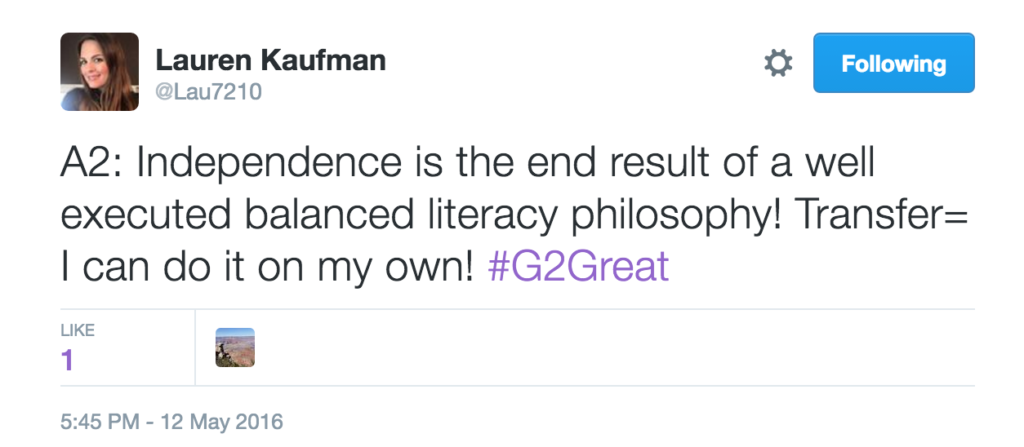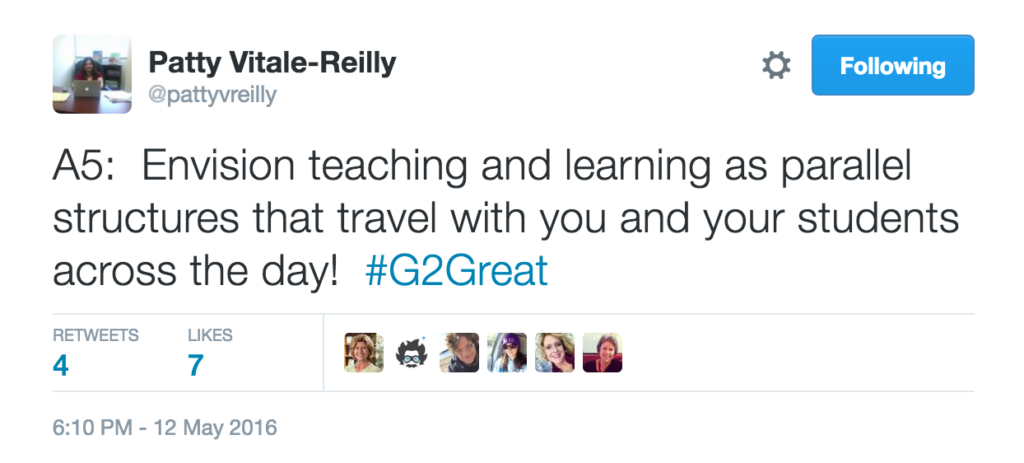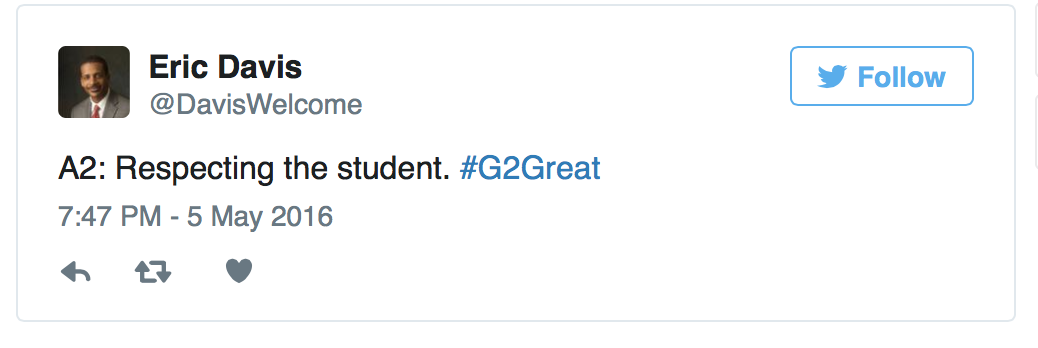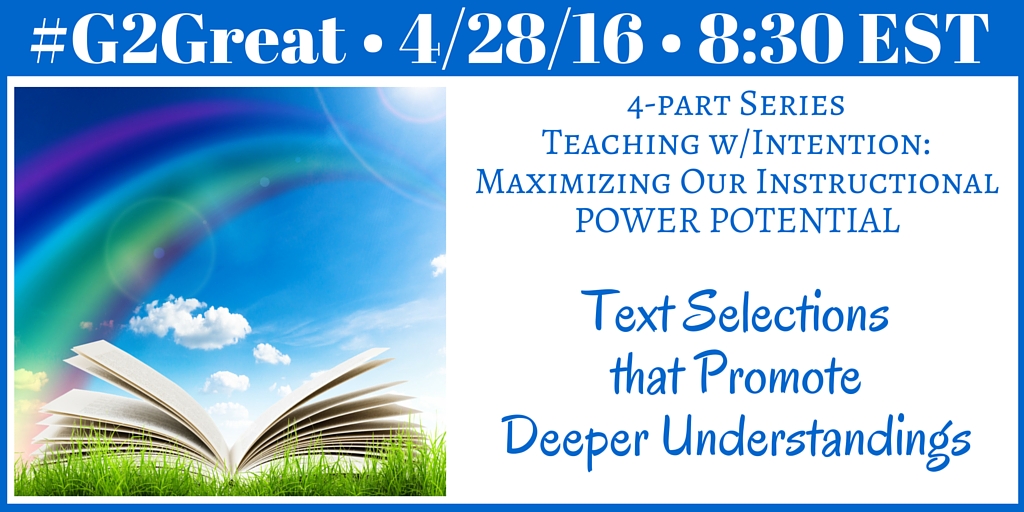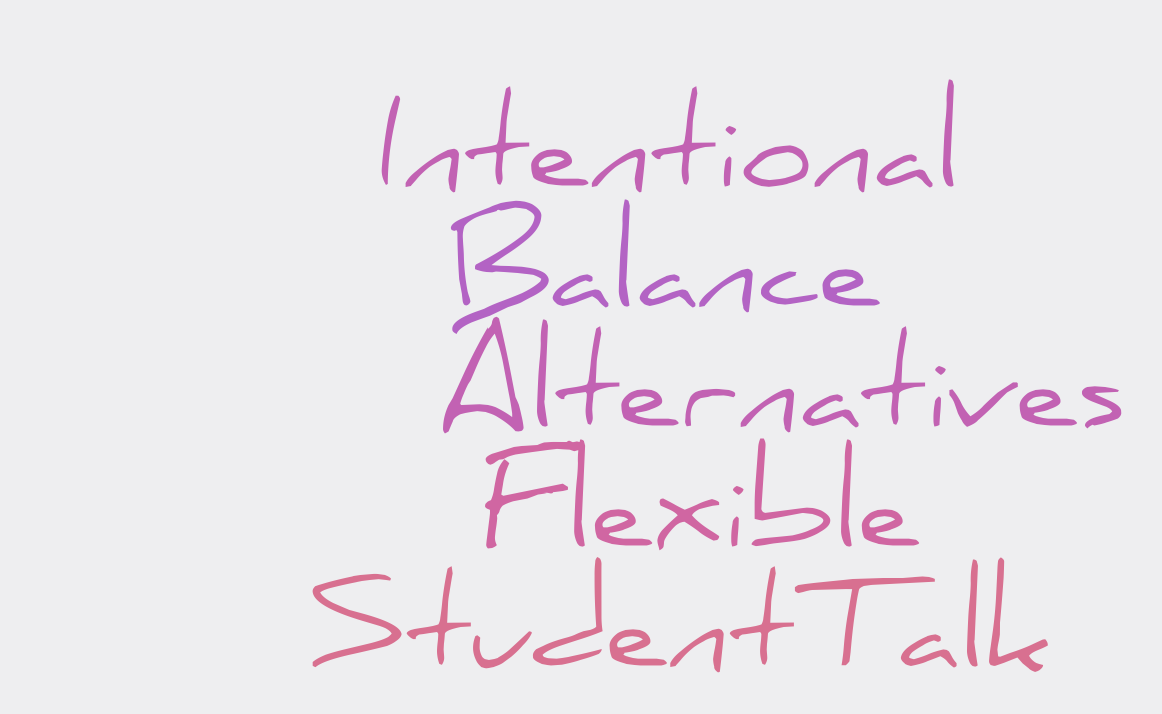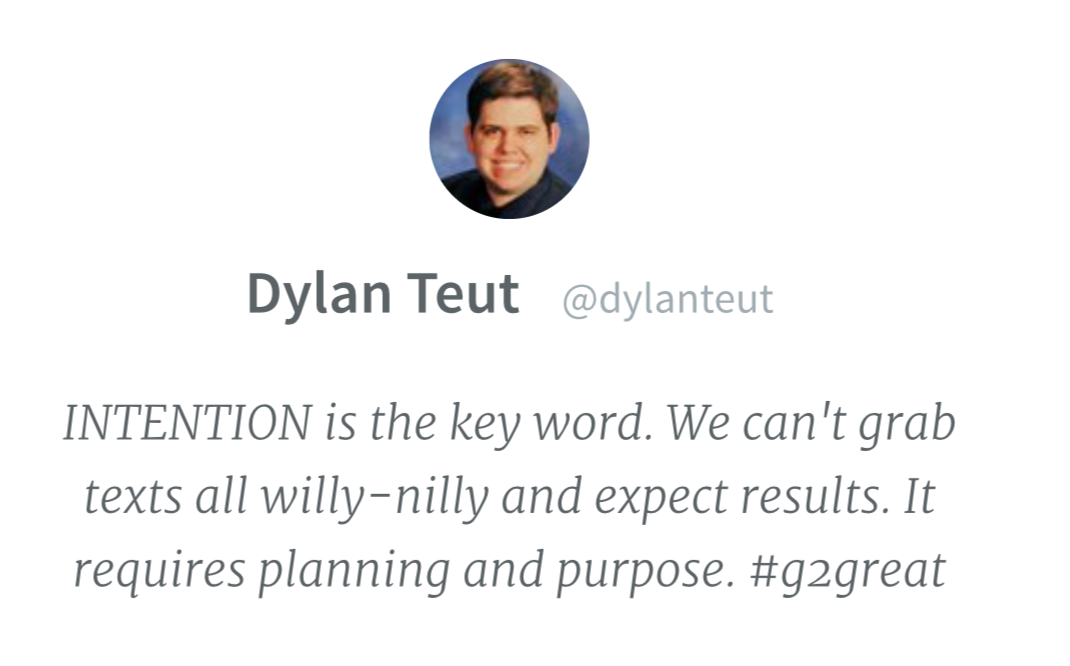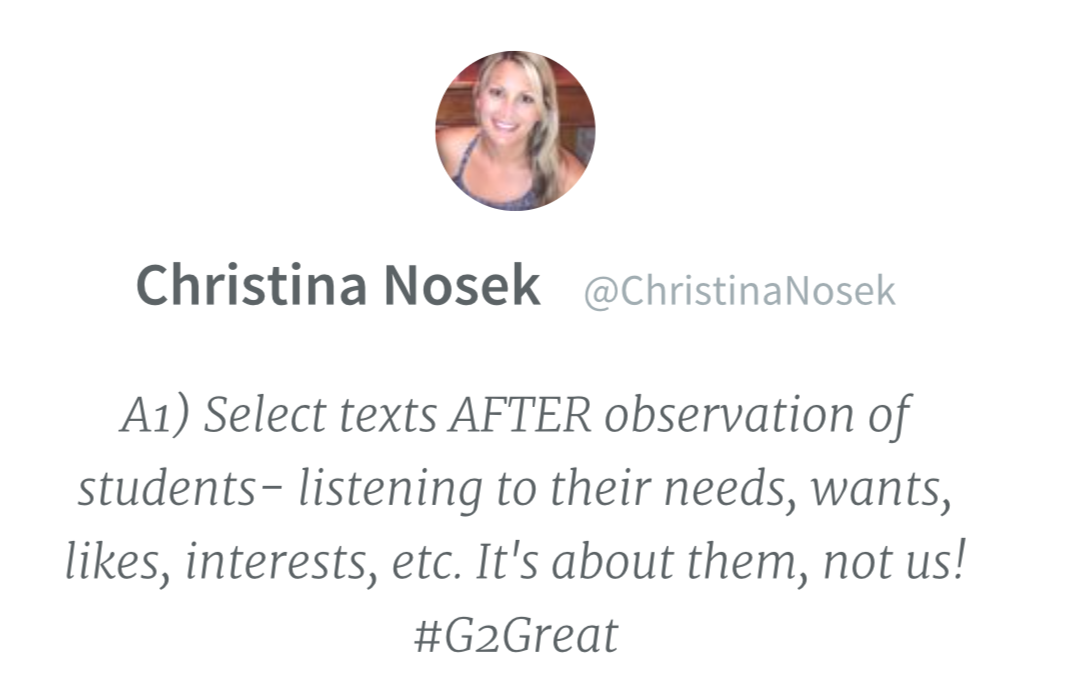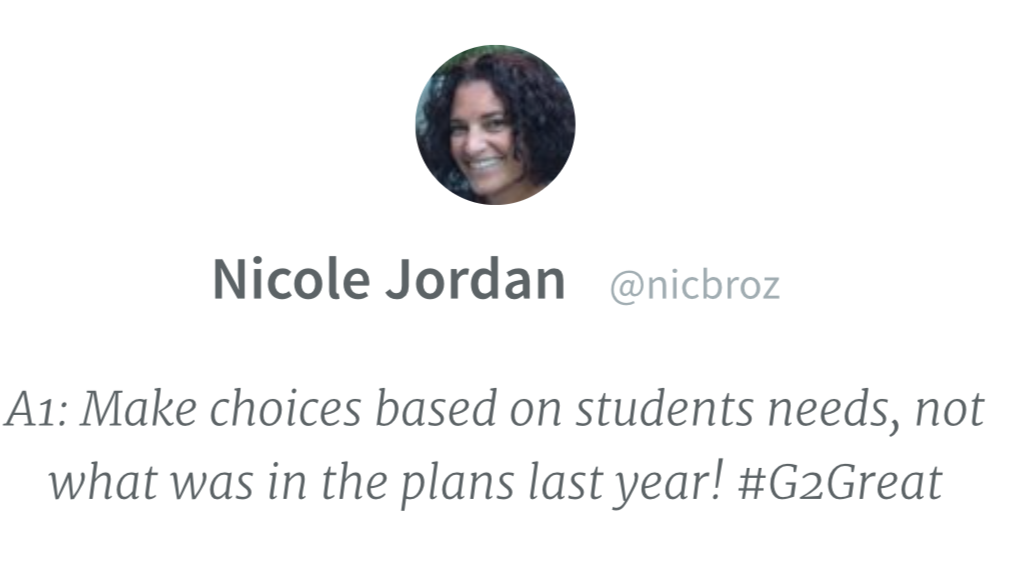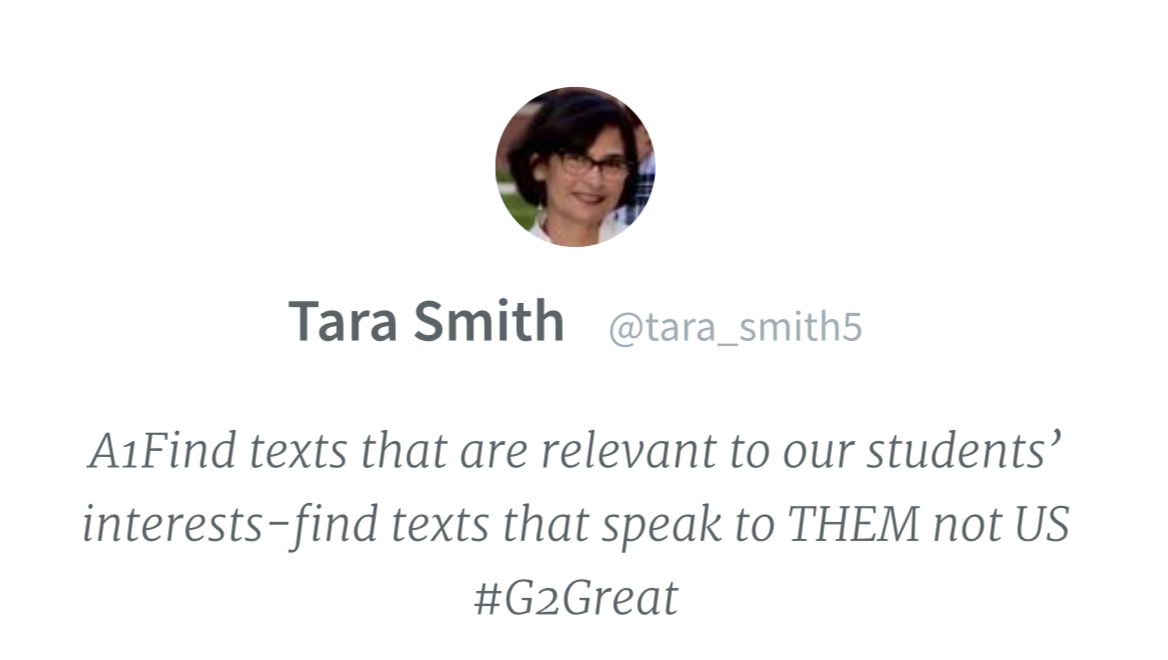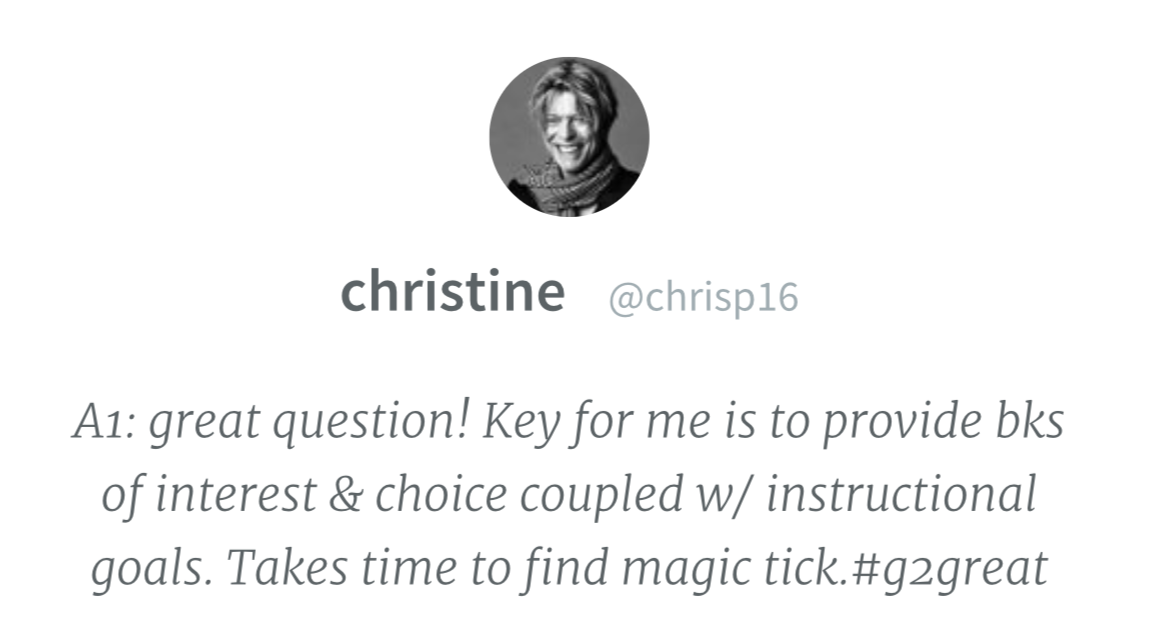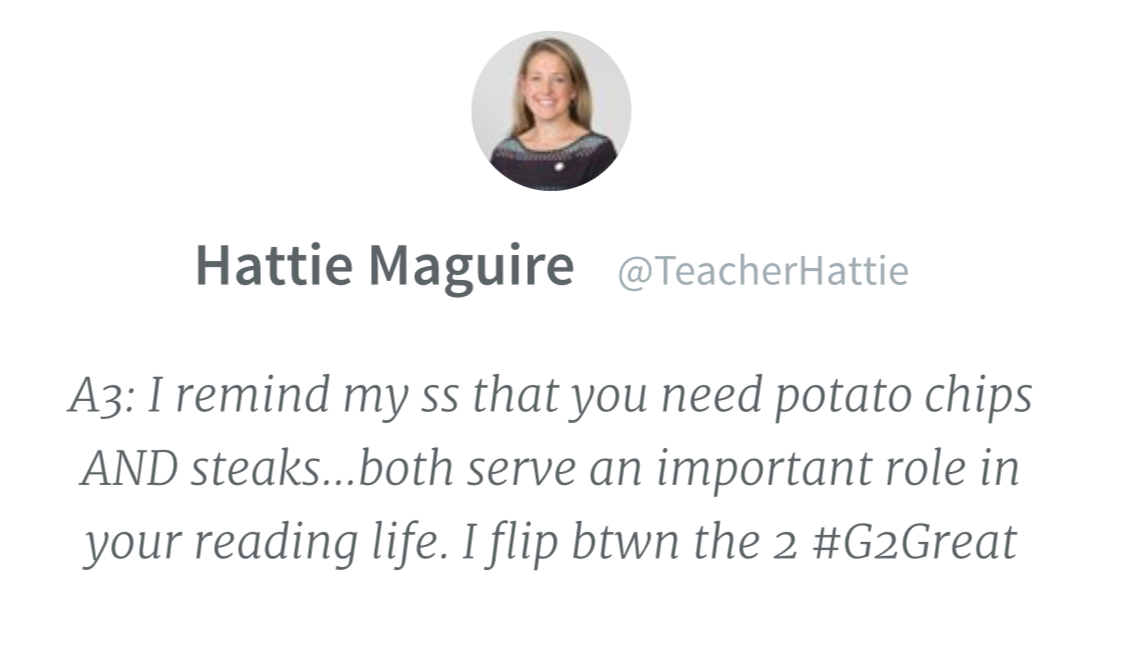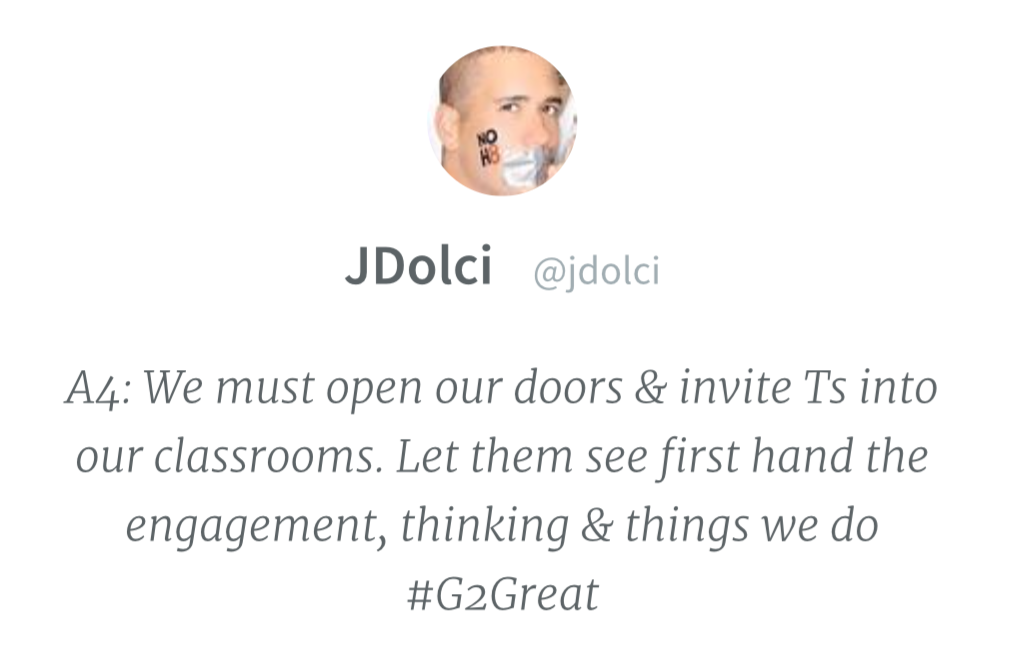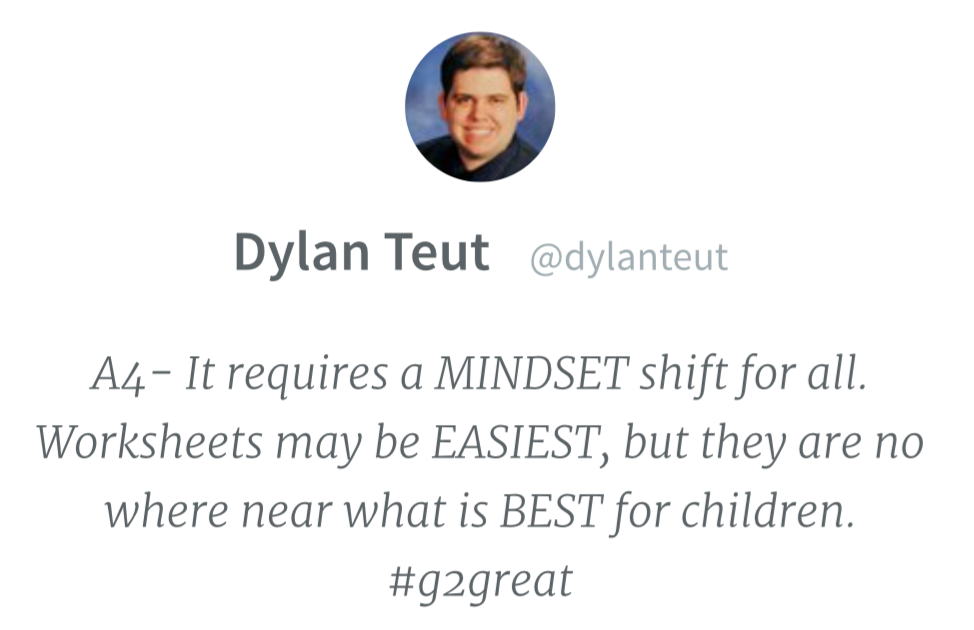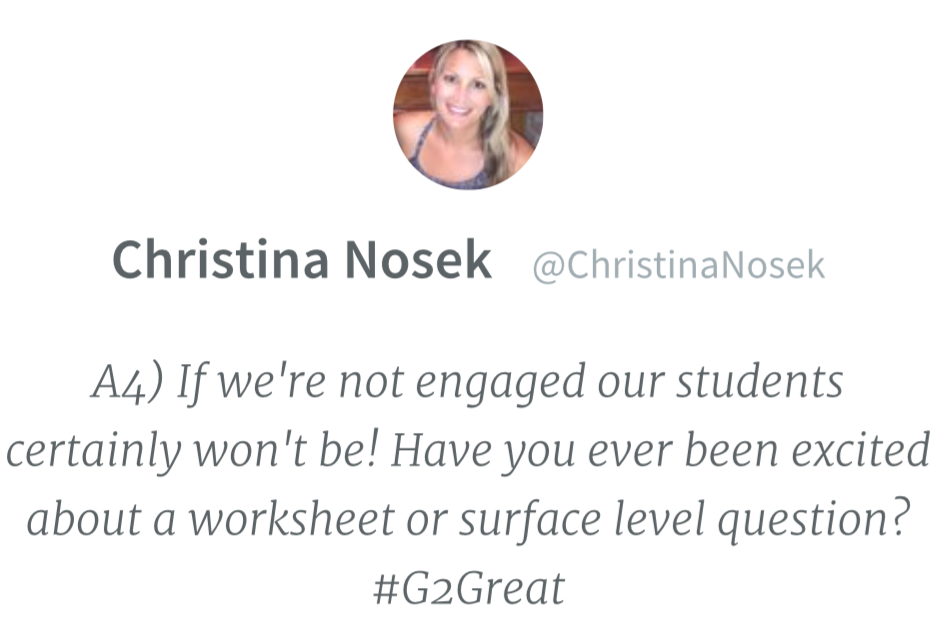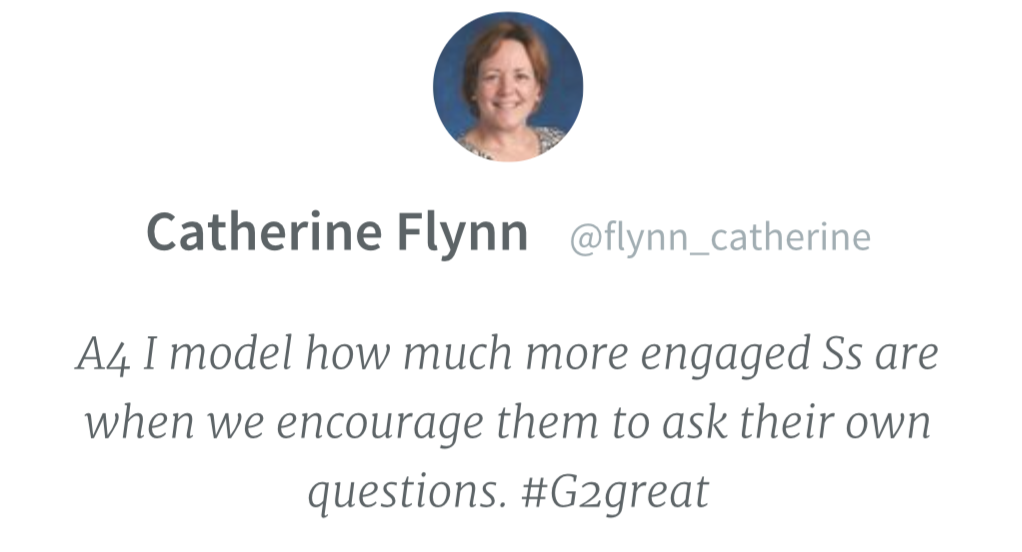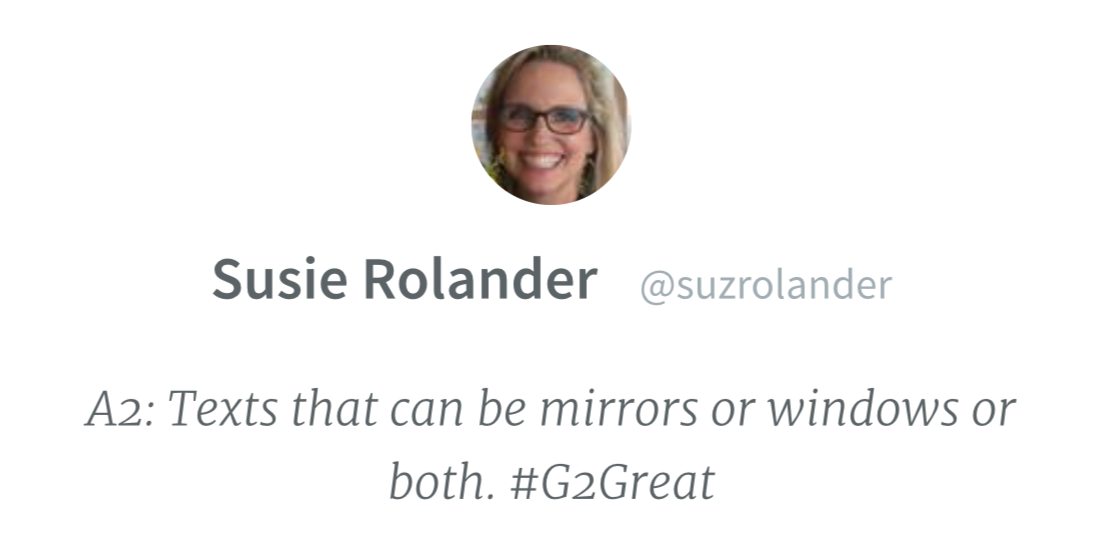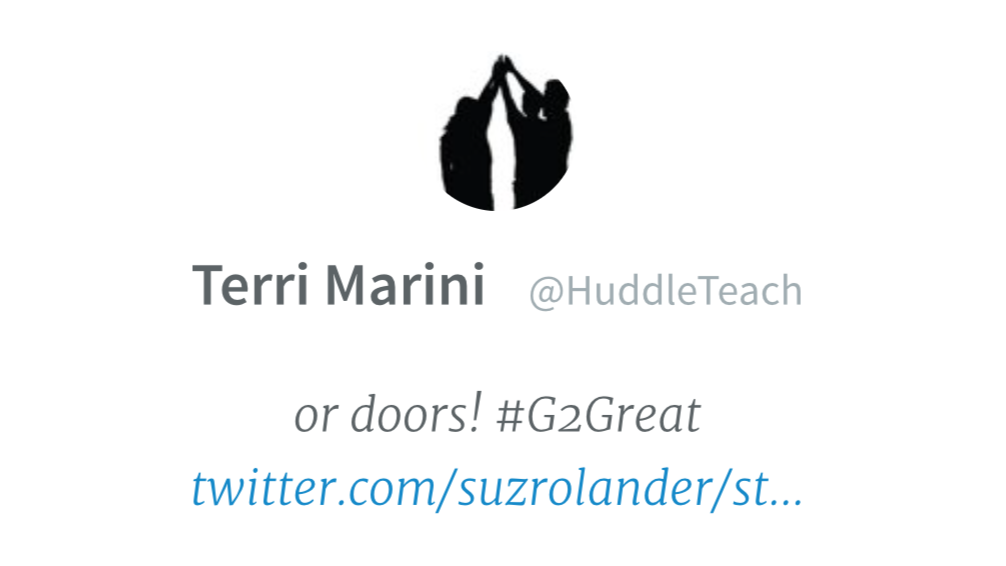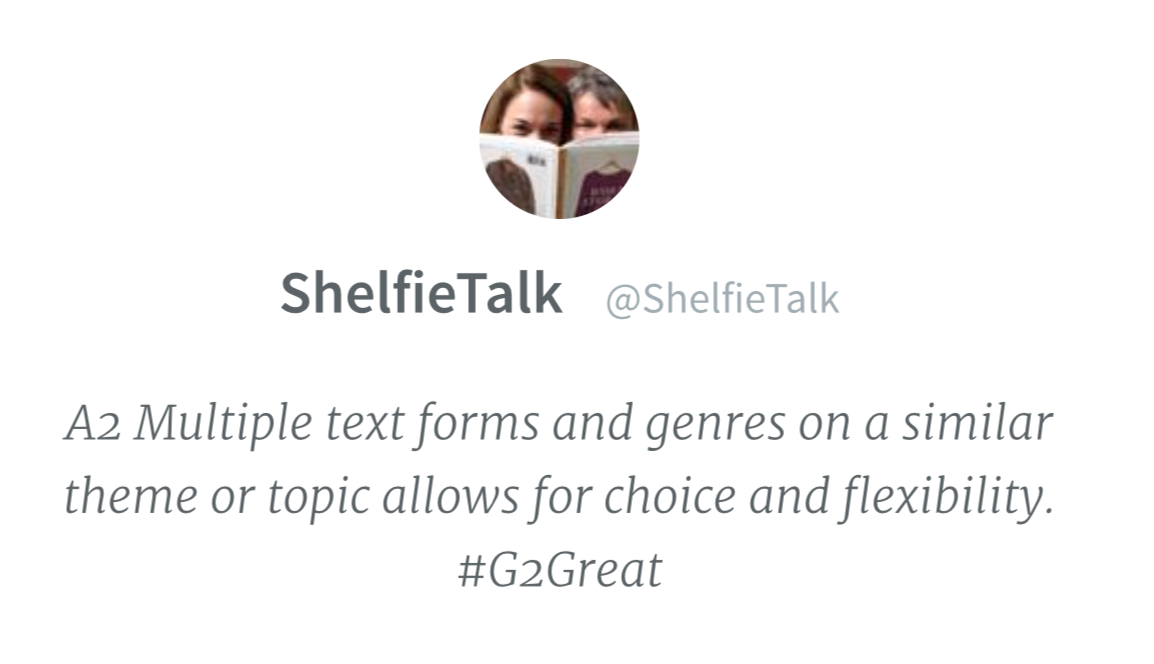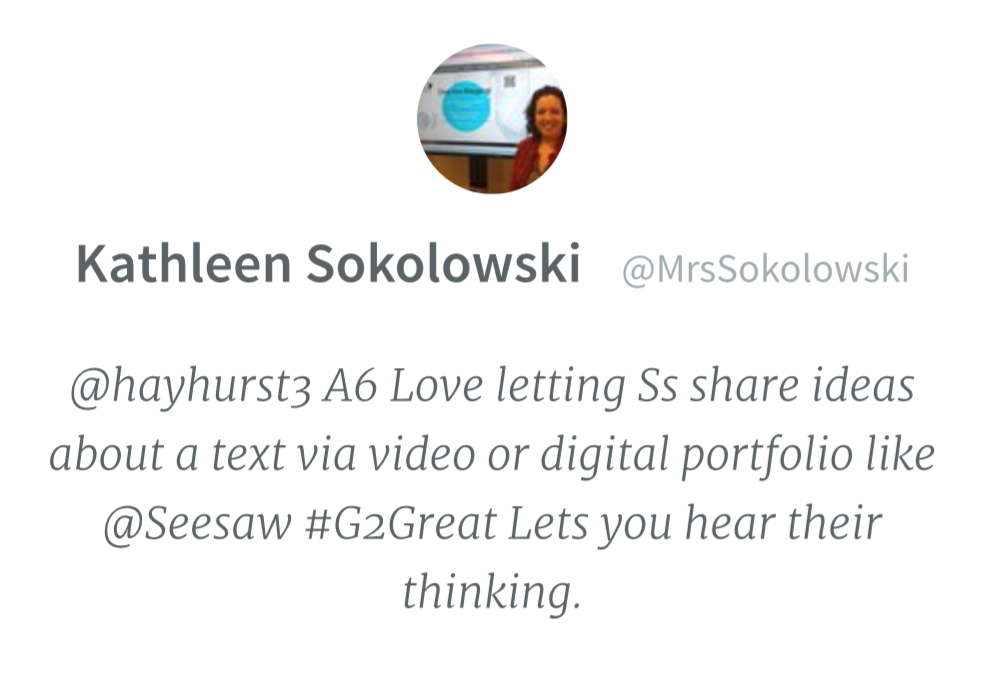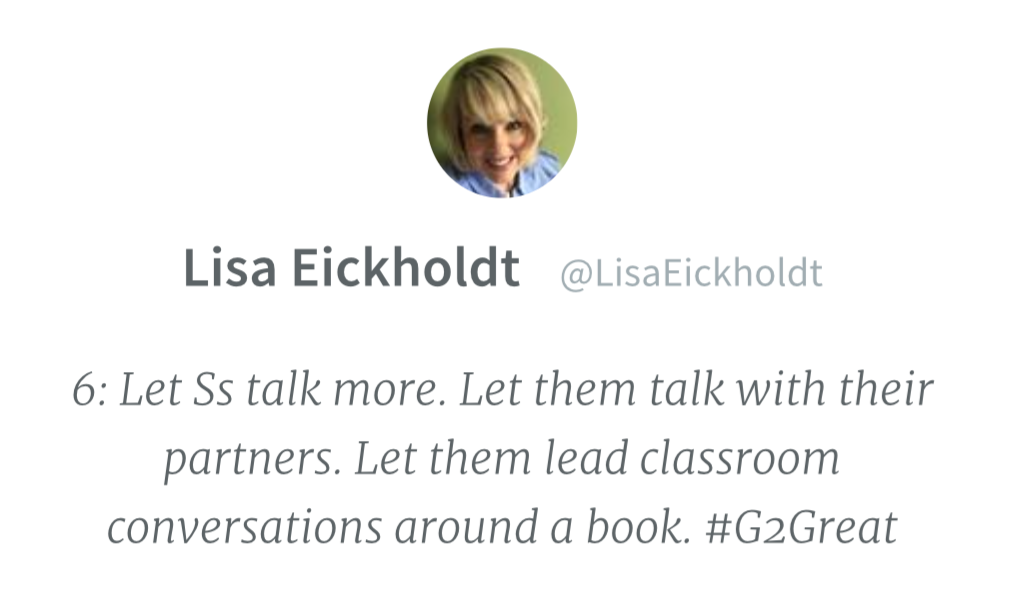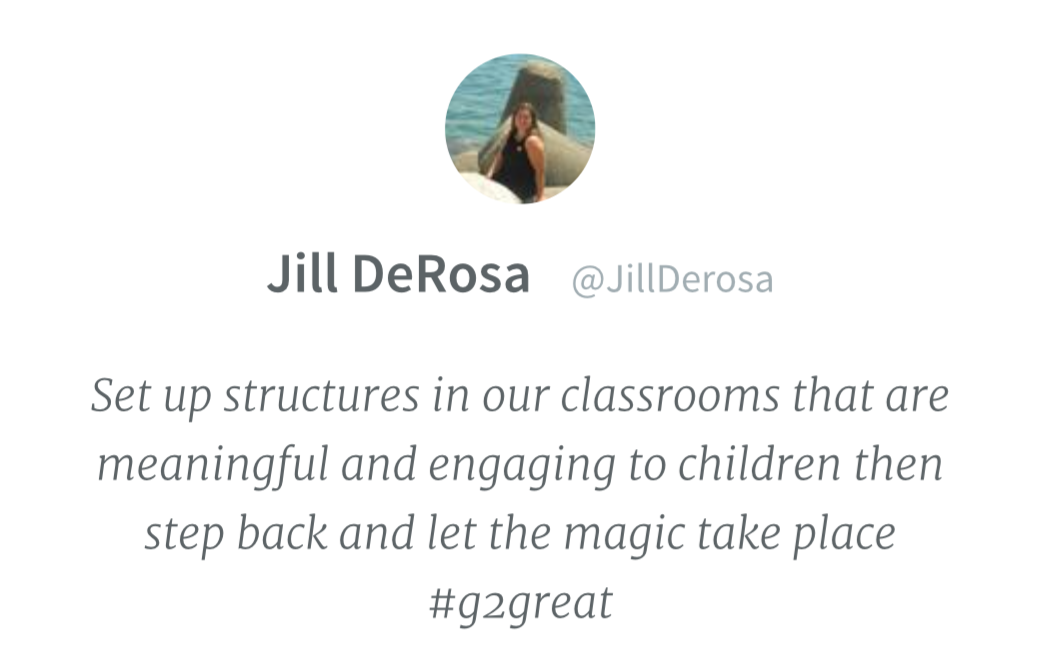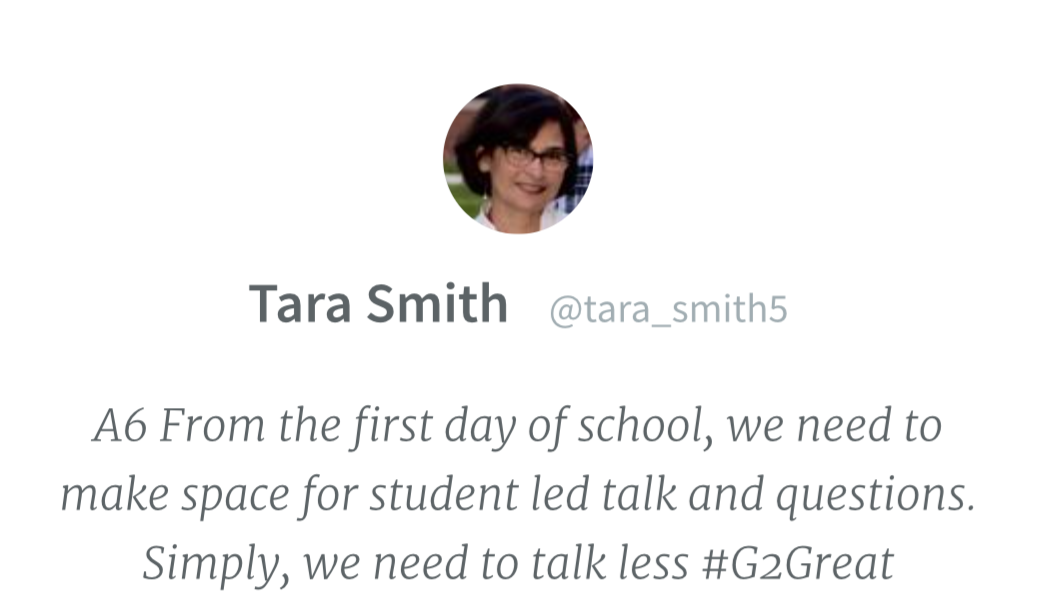On 5/26/16, #G2Great guest host Kimberly Davis spread her light on Influence in Education: Leaving a Lasting Imprint. Kimberly first left her imprint of influence on 7/16/15 when she inspired our BRAVE based on her amazing TEDx Talk, What it means to be Brave. Kimberly brings wisdom, commitment and joy to her work as illustrated in a powerful episode with Alise Cortez, Bringing our True and Best Selves to Work. In fact, I am fortunate to have been touched by her influential friendship over the past year.
When I asked Kimberly about her #G2Great chat vision, she quickly expressed her desire to “stimulate teachers’ ability to influence through professional learning and self-discovery.” We can leave a lasting imprint of influence as we inspire or are inspired by others in positive ways. Certainly her goal was in part met by virtue of educators participating in our twitter chat. But how do we accomplish this even when we are surrounded by negativity? As we explored this question, our #G2Great family left a collective trail of influential imprints.
Kimberly’s message of hope in education comes at a time when her voice is desperately needed. As I perused tweets of influential possibility, I uncovered five points that we can all embrace as we strive to leave our own lasting imprints of influence:
 Influence is anchored in our purpose
Influence is anchored in our purpose
Our purpose is grounded in the innermost beliefs that lead us to do great work each day in our own arena. These beliefs inform and inspire our purpose so that all we do contributes to those beliefs. Without purpose, our path will be littered with the ‘stuff’ that can blind us to influence imprints worth leaving. Our purpose as educators is centered squarely on the recipients of our efforts – students. We seek to understand so we can make decisions that will lift their learning lives, decisions that are inseparably intertwined with our beliefs. Our beliefs are always in our sights so believability (What IF) is transformed into BELIEF-ability (What IS), as our actions reflect that we can be trusted to make decisions based on the beliefs we purport to hold dear.
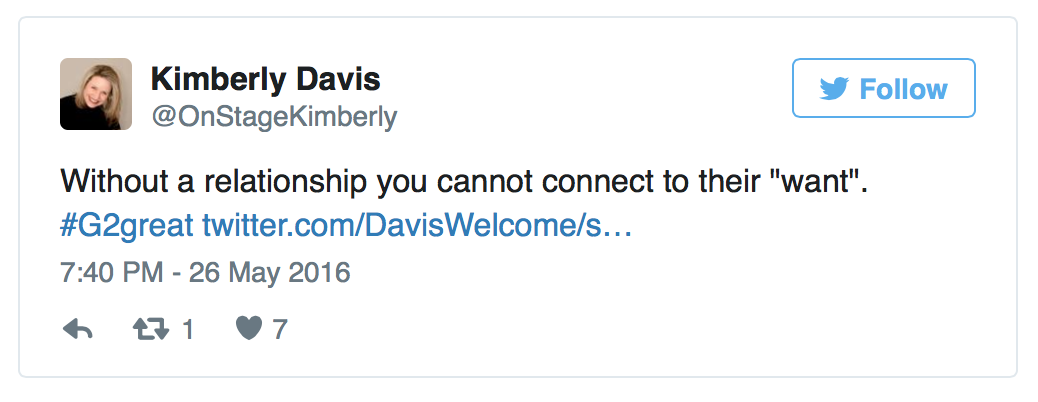 Influence rises from learner “WANTS”
Influence rises from learner “WANTS”
But purpose grounded in our beliefs is only the beginning. In order for us to truly have positive impact, we must be willing to acknowledge and respond to the WANTS of others. Our students’ wants begin with their desire to learn combined with unique needs they bring to the learning table (which varies from child to child). These wants amplify our determination to celebrate each child and honor their learning desires and needs. To do this, we set aside our professional agenda to make them our priority. We accomplish this goal by establishing relationships that help us to truly know students so that we can we tap into their WANTS at even greater levels. We believe every child desires and can achieve success and do all we can to help them become their best self in every possible way. We leave imprints of influence by assuming responsibility to meet their specific needs, refusing to be dissuaded by distractions that impede our efforts.
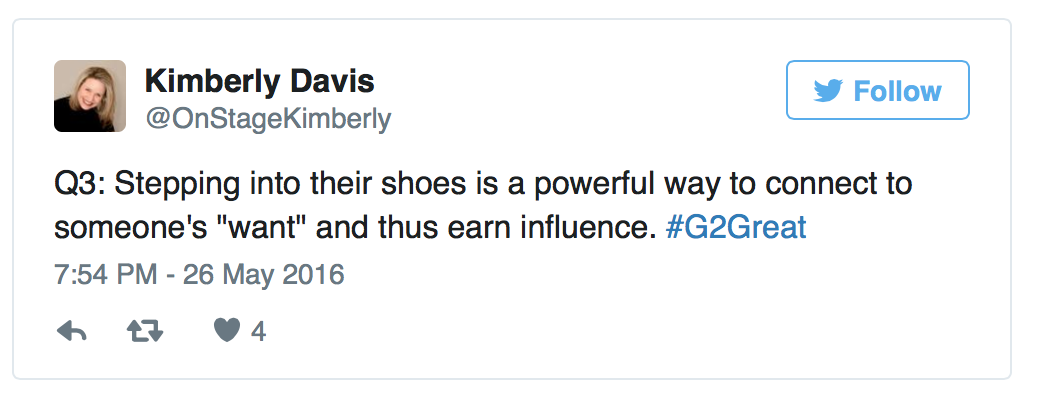 Influence extends beyond our four walls
Influence extends beyond our four walls
Each child who walks into our classrooms brings more than their learning self to school – they also bring their lives outside our doors where they spend the bulk of their day. Understanding this life beyond the school day can help us create a bridge between home and school, a bridge that can strengthen our efforts from both perspectives. We are given a precious gift of time with students, but lasting imprints of influence come from creating this home-school connection. Building an instructional bridge of influence that follows them once they leave our care allows us to ‘step into shoes’ of parents and join forces with them to enrich and extend our efforts even if children are not with us. Understanding and respecting the “wants” of others is a courtesy we offer not only children but parents. Respect is earned and we earn respect when we afford are willing to afford others the same level of respect we desire. Respect is a two-way venture.
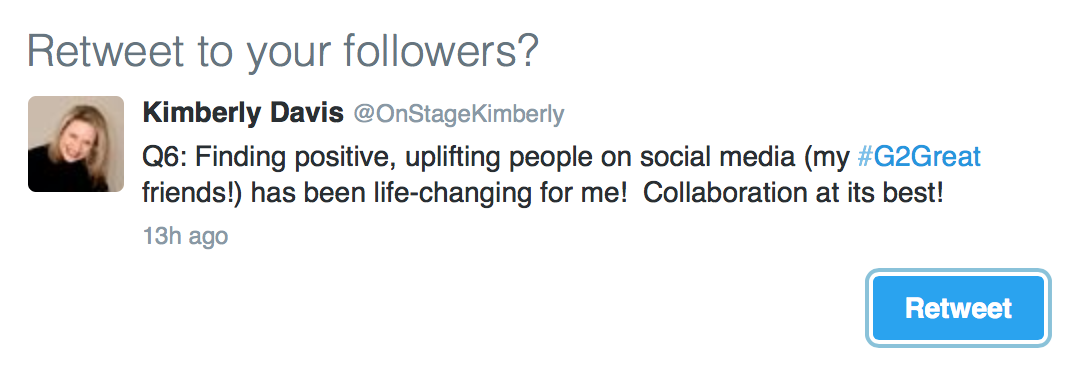 Influence is nurtured in the company of others
Influence is nurtured in the company of others
We have all experienced a sense of professional loneliness even when surrounded by others. We can still leave lasting imprints in a lonely environment or when our words fall on deaf ears, but this is a challenging journey that can derail our efforts and rob us of the joys that enrich the experience. Yet if we are willing to take active steps to find our professional joy tribe of others who believe in our journey, we enter a celebratory exploration of enthusiastic dialogue. These collaborations can transform our teaching in ways that merge our efforts and leave collective imprints of influence as we walk alongside positive, uplifting others. More often than not, we find that our influence is multiplied and even changed by this collective experience along the way. Thoughtfully reflective joint ventures can be a powerful meeting of influential minds.
Kimberly’s tweet is a reminder that each of us hold the power of influence in our hands. Force and coercion seem to be commonplace in schools of today, but we cannot allow this to sap our energy and blind us to our influence potential. In spite of the popular but ever so flawed notion that we can force influence upon others through compliance, influence will occur only when we assume personal and professional responsibility awakened by our commitment and dedication to our profession. Influence is not an act of being, but a lifelong process of becoming. The good news is that no one can rob us of our influence potential unless we allow them to do so. We all hold in our hands the potential to influence others and leave a lasting imprint. Teachers have always had the ability to positively impact others, even when it may not feel that way.
As I ponder Kimberly’s points, I am in awe of the immense potential that each of us have to be influential. You don’t have to write a book, stand on a stage, or have power to be influential (in fact some do those things without being influential). Your book is the book you write as you gaze into the faces of hopeful learners. Your stage is the stage you stand on each day to elevate the learning lives of students. Your power is the quiet impact you have on your own practices when you seek to understand and enrich your work day after day. Each of us leave imprints of influence every day – even when we are not yet privy to that influence at the time.
Never underestimate your influence on others and those they in turn influence, knowing that we can’t be influenced unless we are willing to be influential. This is a ‘heart decision’ we make out of deep commitment and dedication to our work and our responsibility to do that work in the most effective ways.
Yes Kimberly, tomorrow is ours to win or lose and with the student stakes so high, winning is the only option. Thank you for leaving an imprint of influence on each of us and for inspiring us to bravely forge ahead as we strive to leave our own lasting imprints of influence on others so…
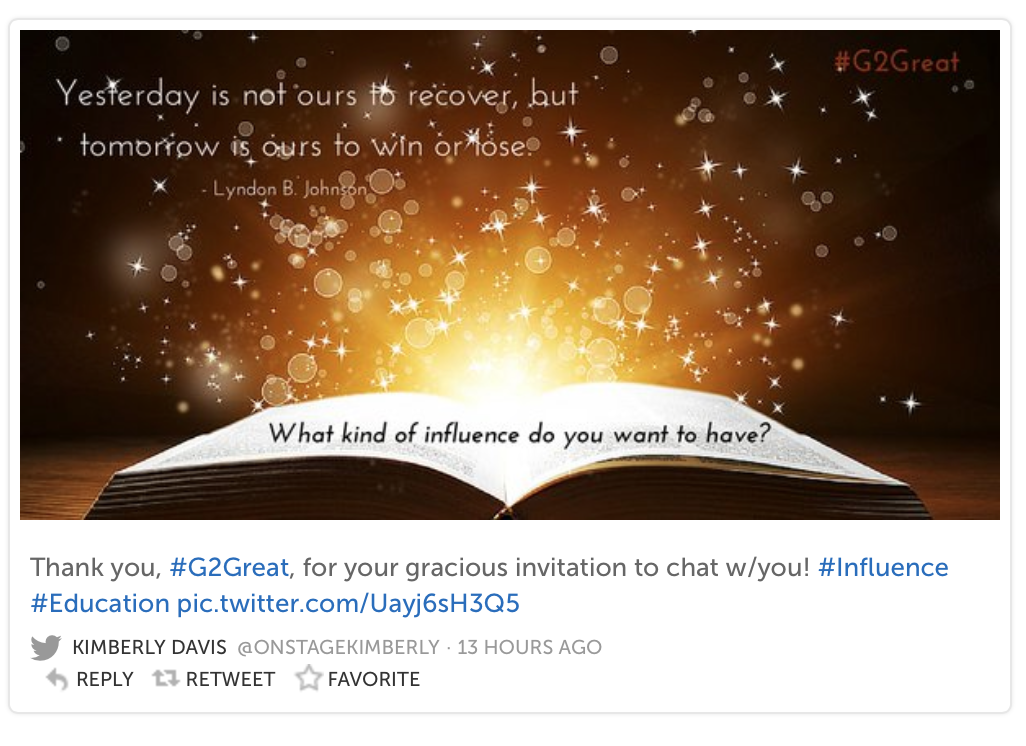 I hereby make a Heart Decision to Win Tomorrow by approaching my work through a lens of joy and wonder where the magnificent realm of possibilities will forever remain in my sights. I choose to spread a light as candle and mirror. I choose to leave a lasting imprint of influence on others and embrace the imprints they leave as I continue on my learning journey. I choose…
I hereby make a Heart Decision to Win Tomorrow by approaching my work through a lens of joy and wonder where the magnificent realm of possibilities will forever remain in my sights. I choose to spread a light as candle and mirror. I choose to leave a lasting imprint of influence on others and embrace the imprints they leave as I continue on my learning journey. I choose…
Will you join me friends?
Below are just a few of the many inspirational tweets from our dedicated #G2Great friends

